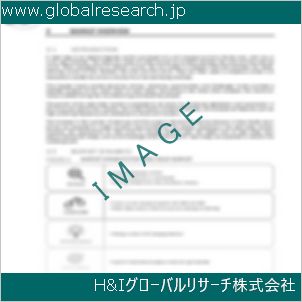Table of Contents
1 Industry Overview of Diisobutyladipate
1.1 Definition and Specifications of Diisobutyladipate
1.1.1 Definition of Diisobutyladipate
1.1.2 Specifications of Diisobutyladipate
1.2 Classification of Diisobutyladipate
1.3 Applications of Diisobutyladipate
1.3.1 Nuclear Application
1.3.2 Non-Nuclear Application
1.4 Industry Chain Structure of Diisobutyladipate
1.5 Industry Overview and Major Regions Status of Diisobutyladipate
1.5.1 Industry Overview of Diisobutyladipate
1.5.2 Global Major Regions Status of Diisobutyladipate
1.6 Industry Policy Analysis of Diisobutyladipate
1.7 Industry News Analysis of Diisobutyladipate
2 Manufacturing Cost Structure Analysis of Diisobutyladipate
2.1 Raw Material Suppliers and Price Analysis of Diisobutyladipate
2.2 Equipment Suppliers and Price Analysis of Diisobutyladipate
2.3 Labor Cost Analysis of Diisobutyladipate
2.4 Other Costs Analysis of Diisobutyladipate
2.5 Manufacturing Cost Structure Analysis of Diisobutyladipate
2.6 Manufacturing Process Analysis of Diisobutyladipate
3 Technical Data and Manufacturing Plants Analysis of Diisobutyladipate
3.1 Capacity and Commercial Production Date of Global Diisobutyladipate Major Manufacturers in 2023
3.2 Manufacturing Plants Distribution of Global Diisobutyladipate Major Manufacturers in 2023
3.3 R&D Status and Technology Source of Global Diisobutyladipate Major Manufacturers in 2023
3.4 Raw Materials Sources Analysis of Global Diisobutyladipate Major Manufacturers in 2023
4 Capacity, Production and Revenue Analysis of Diisobutyladipate by Regions, Types and Manufacturers
4.1 Global Capacity, Production and Revenue of Diisobutyladipate by Regions 2019-2024
4.2 Global and Major Regions Capacity, Production, Revenue and Growth Rate of Diisobutyladipate 2019-2024
4.3 Global Capacity, Production and Revenue of Diisobutyladipate by Types 2019-2024
4.4 Global Capacity, Production and Revenue of Diisobutyladipate by Manufacturers 2019-2024
5 Price, Cost, Gross and Gross Margin Analysis of Diisobutyladipate by Regions, Types and Manufacturers
5.1 Price, Cost, Gross and Gross Margin Analysis of Diisobutyladipate by Regions 2019-2024
5.2 Price, Cost, Gross and Gross Margin Analysis of Diisobutyladipate by Types 2019-2024
5.3 Price, Cost, Gross and Gross Margin Analysis of Diisobutyladipate by Manufacturers 2019-2024
6 Consumption Volume, Consumption Value and Sale Price Analysis of Diisobutyladipate by Regions, Types and Applications
6.1 Global Consumption Volume and Consumption Value of Diisobutyladipate by Regions 2019-2024
6.2 Global and Major Regions Consumption Volume, Consumption Value and Growth Rate of Diisobutyladipate 2019-2024
6.3 Global Consumption Volume and Consumption Value of Diisobutyladipate by Types 2019-2024
6.4 Global Consumption Volume and Consumption Value of Diisobutyladipate by Applications 2019-2024
6.5 Sale Price of Diisobutyladipate by Regions 2019-2024
6.6 Sale Price of Diisobutyladipate by Types 2019-2024
6.7 Sale Price of Diisobutyladipate by Applications 2019-2024
6.8 Market Share Analysis of Diisobutyladipate by Different Sale Price Levels
7 Supply, Import, Export and Consumption Analysis of Diisobutyladipate
7.1 Supply, Consumption and Gap of Diisobutyladipate 2019-2024
7.2 Global Capacity, Production, Price, Cost, Revenue, Supply, Import, Export and Consumption of Diisobutyladipate 2019-2024
7.3 USA Capacity, Production, Price, Cost, Revenue, Supply, Import, Export and Consumption of Diisobutyladipate 2019-2024
7.4 EU Capacity, Production, Price, Cost, Revenue, Supply, Import, Export and Consumption of Diisobutyladipate 2019-2024
7.5 China Capacity, Production, Price, Cost, Revenue, Supply, Import, Export and Consumption of Diisobutyladipate 2019-2024
7.6 Japan Capacity, Production, Price, Cost, Revenue, Supply, Import, Export and Consumption of Diisobutyladipate 2019-2024
8 Major Manufacturers Analysis of Diisobutyladipate
8.1 Manufacturer One
8.1.1 Company Profile
8.1.2 Product Picture and Specifications
8.1.2.1 Type I
8.1.2.2 Type II
8.1.2.3 Type III
8.1.3 Capacity, Production, Price, Cost, Gross and Revenue
8.1.4 Contact Information
8.2 Manufacturer Two
8.2.1 Company Profile
8.2.2 Product Picture and Specifications
8.2.2.1 Type I
8.2.2.2 Type II
8.2.2.3 Type III
8.2.3 Capacity, Production, Price, Cost, Gross and Revenue
8.2.4 Contact Information
8.3 Manufacturer Three
8.3.1 Company Profile
8.3.2 Product Picture and Specifications
8.3.2.1 Type I
8.3.2.2 Type II
8.3.2.3 Type III
8.3.3 Capacity, Production, Price, Cost, Gross and Revenue
8.3.4 Contact Information
8.4 Manufacturer Four
8.4.1 Company Profile
8.4.2 Product Picture and Specifications
8.4.2.1 Type I
8.4.2.2 Type II
8.4.2.3 Type III
8.4.3 Capacity, Production, Price, Cost, Gross and Revenue
8.4.4 Contact Information
8.5 Manufacturer Five
8.5.1 Company Profile
8.5.2 Product Picture and Specifications
8.5.2.1 Type I
8.5.2.2 Type II
8.5.2.3 Type III
8.5.3 Capacity, Production, Price, Cost, Gross and Revenue
8.5.4 Contact Information
…
9 Marketing Trader or Distributor Analysis of Diisobutyladipate
9.1 Marketing Channels Status of Diisobutyladipate
9.2 Traders or Distributors with Contact Information of Diisobutyladipate by Regions
9.3 Ex-work Price, Channel Price and End Buyer Price Analysis of Diisobutyladipate
9.4 Regional Import, Export and Trade Analysis of Diisobutyladipate
10 Industry Chain Analysis of Diisobutyladipate
10.1 Upstream Major Raw Materials Suppliers Analysis of Diisobutyladipate
10.1.1 Major Raw Materials Suppliers with Contact Information Analysis of Diisobutyladipate
10.1.2 Major Raw Materials Suppliers with Supply Volume Analysis of Diisobutyladipate by Regions
10.2 Upstream Major Equipment Suppliers Analysis of Diisobutyladipate
10.2.1 Major Equipment Suppliers with Contact Information Analysis of Diisobutyladipate
10.2.2 Major Equipment Suppliers with Product Pictures Analysis of Diisobutyladipate by Regions
10.3 Downstream Major Consumers Analysis of Diisobutyladipate
10.3.1 Major Consumers with Contact Information Analysis of Diisobutyladipate
10.3.2 Major Consumers with Consumption Volume Analysis of Diisobutyladipate by Regions
10.4 Supply Chain Relationship Analysis of Diisobutyladipate
11 Development Trend of Analysis of Diisobutyladipate
11.1 Capacity, Production and Revenue Forecast of Diisobutyladipate by Regions and Types
11.1.1 Global Capacity, Production and Revenue of Diisobutyladipate by Regions 2024-2029
11.1.2 Global and Major Regions Capacity, Production, Revenue and Growth Rate of Diisobutyladipate 2024-2029
11.1.3 Global Capacity, Production and Revenue of Diisobutyladipate by Types 2024-2029
11.2 Consumption Volume and Consumption Value Forecast of Diisobutyladipate by Regions, Types and Applications
11.2.1 Global Consumption Volume and Consumption Value of Diisobutyladipate by Regions 2024-2029
11.2.2 Global and Major Regions Consumption Volume, Consumption Value and Growth Rate of Diisobutyladipate 2024-2029
11.2.3 Global Consumption Volume and Consumption Value of Diisobutyladipate by Types 2024-2029
11.2.4 Global Consumption Volume and Consumption Value of Diisobutyladipate by Applications 2024-2029
11.3 Supply, Import, Export and Consumption Forecast of Diisobutyladipate
11.3.1 Supply, Consumption and Gap of Diisobutyladipate 2024-2029
11.3.2 Global Capacity, Production, Price, Cost, Revenue, Supply, Import, Export and Consumption of Diisobutyladipate 2024-2029
11.3.3 USA Capacity, Production, Price, Cost, Revenue, Supply, Import, Export and Consumption of Diisobutyladipate 2024-2029
11.3.4 EU Capacity, Production, Price, Cost, Revenue, Supply, Import, Export and Consumption of Diisobutyladipate 2024-2029
11.3.5 China Capacity, Production, Price, Cost, Revenue, Supply, Import, Export and Consumption of Diisobutyladipate 2024-2029
11.3.6 Japan Capacity, Production, Price, Cost, Revenue, Supply, Import, Export and Consumption of Diisobutyladipate 2024-2029
12 New Project Investment Feasibility Analysis of Diisobutyladipate
12.1 New Project SWOT Analysis of Diisobutyladipate
12.2 New Project Investment Feasibility Analysis of Diisobutyladipate
13 Conclusion of the Global Diisobutyladipate (CAS 141-04-8) Industry 2024 Market Research Report
| ※参考情報 アジピン酸ジイソブチル(Diisobutyladipate、CAS番号141-04-8)は、有機化合物の一種で、一般的にはエステルの分類に属します。エステルは、酸とアルコールが脱水縮合することで生成される化合物であり、アジピン酸ジイソブチルはアジピン酸とイソブタノールが反応して生成されるエステルです。この化合物は、透明な液体であり、特有のにおいがあります。 アジピン酸ジイソブチルの主要な特徴の一つは、その高い熱安定性です。これは、ポリマーやプラスチックの添加剤として使用される際、熱や光に対して安定な性能を持つことを可能にします。また、低温での流動性も良好であり、寒冷地域での用途においても優れた性能を発揮します。これに加えて、この化合物は低蒸気圧であるため、揮発性を抑えることができ、特に塗料やコーティング素材において持続性を向上させる役割を果たします。 アジピン酸ジイソブチルにはいくつかの種類の用途がありますが、主な用途はプラスチックの柔軟剤や添加剤としての使用です。特にポリ塩化ビニル(PVC)の製造過程においては、柔軟性を高めるために添加されることが一般的です。この柔軟剤は、製品の耐久性や加工性を向上させるために重要な役割を担っています。また、アジピン酸ジイソブチルは、ゴムや合成樹脂の製造においてもよく使用されます。例えば、エラストマーやその他の合成材料において、柔軟性の向上と物理的特性の改善のために添加されることがあります。 さらに、アジピン酸ジイソブチルは化粧品やパーソナルケア製品にも使用されることがあります。化粧品においては、保湿剤やエモリエント成分として機能することで、肌に潤いを与えたり、滑らかな使用感を提供したりします。これにより、製品のユーザーエクスペリエンスを向上させることができます。 また、アジピン酸ジイソブチルは環境への影響を考慮した際にも注目されています。業界全体が持続可能な材料の使用を追求しており、この化合物は比較的低環境影響を持つとされています。生分解性の向上など、新しい技術が進展する中で、アジピン酸ジイソブチルの使用が今後ますます広がる可能性があります。 関連技術の面では、アジピン酸ジイソブチルの合成方法や精製プロセスが重要な研究課題となっています。より効率的で持続可能な合成方法の開発が、環境負荷の低減やコスト削減につながるため、研究者たちは様々なアプローチを模索しています。また、アジピン酸ジイソブチルそのものの新しい用途を発見するための研究も進められており、新しい市場での可能性が広がっています。 最後に、アジピン酸ジイソブチルはその多機能性から、さまざまな産業での需要があります。プラスチック業界から化粧品、さらには新しい材料科技術の開発に至るまで、その用途は多岐にわたります。今後の研究と技術の進展により、さらに新しい利用方法や特性の発展が期待される化合物であることは間違いありません。持続可能な社会を築くための重要な材料として、注目され続けることでしょう。 |
❖ 免責事項 ❖
http://www.globalresearch.jp/disclaimer












